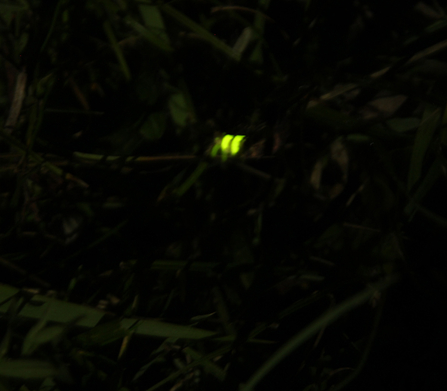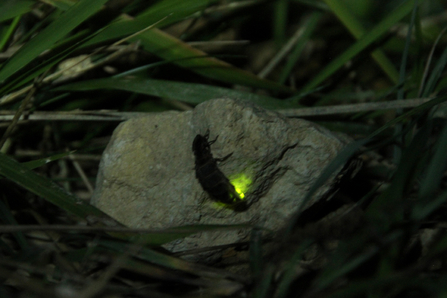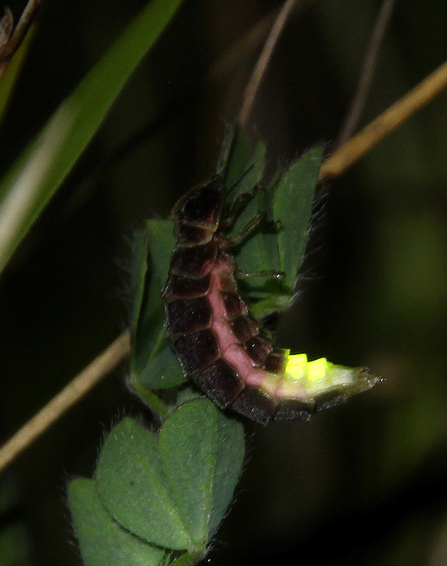A lost natural wonder?
My research included interviewing long-time residents about what the valley’s wildlife meant to them and what changes, if any, they had noticed. I began asking about glow worms. More stories emerged. An interviewee confessed to having once used glow worms to write ‘welcome home’ to her stop-out husband on their front lawn. By the time he returned from the pub, most of the message had wandered away. Another remembered looking from her window towards the far side of the valley and seeing our local high point, Swifts Hill, ‘lit up by glow worms’. Several others recalled regularly seeing them in the hedgerows. But, now they came to think of it, not recently. Not in the last few years. Not, perhaps, in the last decade? I began to think glow worms were just another lost wonder of our shrinking natural world.
A new hope
Then I interviewed Pete Bradshaw, at that time GWT’s reserve manager for Swifts Hill. Pete remembered that the previous summer, when checking up on a group of young people illegally camping in the reserve, he was greeted with “Oy mate, do you know you’ve got glow worms up here?” Which gave me a sliver of hope, and somewhere to start looking.
Moment of joy
Picture me, then, on a warm night in July, trying not to use my torch, cautiously picking my way through the gathering darkness. Many small white flowers grow on Swifts Hill in summer and believe me, at that time of night, with the light almost gone, they all look like glow worms. Until you see the real thing. When a tiny, gold-green light suddenly appeared in the grass ahead of me, the adrenalin rush was extraordinary. It was a moment of absolute joy, never to be forgotten. I have been privileged to experience a few stand-out wildlife encounters since then, including being 20 feet away from a wild tiger, but my first glow worm is up there in the top three.




